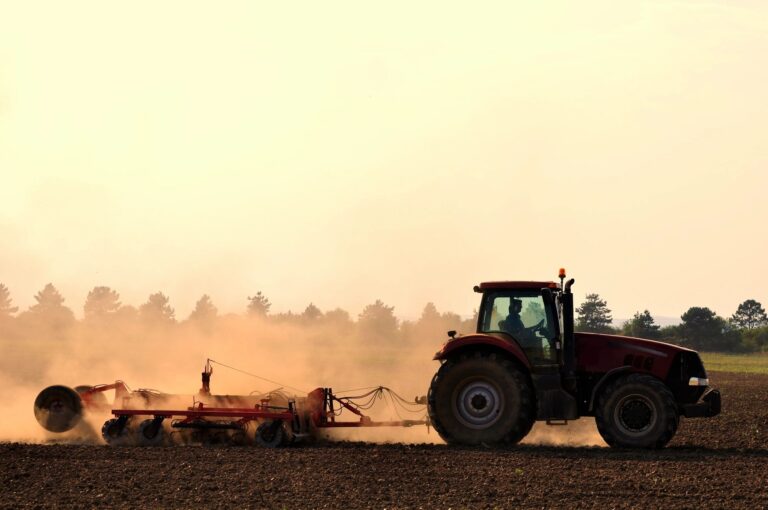
There’s a popular misconception that rural Missouri “lives off” government aid while cities like St. Louis and Kansas City “pay all the bills.” The data tells a different story. Overall government spending per person is not skewed to benefit rural areas more than urban ones. In fact, USDA data shows per capita federal spending in rural counties is often lower than in urban counties (The Myth of Rural ‘Subsidies’). Yes, programs like farm subsidies mostly go to rural communities – but those make up only a tiny slice of federal spending (just ~4% of per-person federal expenditures in rural counties) (The Myth of Rural ‘Subsidies’). The vast bulk of government dollars (for healthcare, education, infrastructure, etc.) flows everywhere, and cities actually receive considerable investment. For example, Missouri’s own transportation department (MoDOT) spends most of its highway funds in urban areas: about 61% of state highway spending goes to urban roads, vs. 39% in rural areas (The Urban-Rural Divide in MoDOT Spending – Show Me Institute). This makes sense, since cities have more drivers and big highways – but it debunks the idea that rural roads “steal” all the money. In reality, rural Missourians pay taxes too – through income, sales, gas, and property taxes – yet often get by with less infrastructure and services per capita than city folks. The idea that urban Missouri is “carrying” rural Missouri doesn’t hold up to the facts. Both rural and urban communities receive government support in different ways, and both are struggling with underinvestment in critical services.
Neglected Rural Infrastructure and Services
If anything, rural Missouri has been under-served in many respects. Decades of political choices and budget cuts have led to serious neglect of rural infrastructure and services that city residents might take for granted:
- Healthcare Access: Rural hospitals are lifelines for their communities, but many are in trouble. One-third of Missouri’s rural hospitals (19 out of 57) are at risk of closing due to serious financial problems (One-third of Missouri’s rural hospitals are at risk of closure, new data shows | KCUR – Kansas City news and NPR). This is on top of past closures – 10 rural Missouri hospitals have already shut down since 2012 (One-third of Missouri’s rural hospitals are at risk of closure, new data shows | KCUR – Kansas City news and NPR). When a rural hospital closes, residents lose local emergency rooms, maternity care, and clinics. Folks may have to drive an hour or more for care – a dangerous situation for strokes, accidents, or delivering a baby. Healthcare shortages mean rural families and seniors often struggle to find doctors and services nearby. This isn’t rural “luxury” spending; it’s a basic need that’s increasingly going unmet.
- Deteriorating Roads & Bridges: Rural communities maintain huge networks of farm-to-market roads and county highways – the arteries that get crops to market and people to work. But funding hasn’t kept up. About 21% of Missouri’s rural roads are in poor condition (7th worst in the nation), and another 28% are in only “mediocre” condition (). The bridges are aging too – roughly 1 in 10 rural Missouri bridges is structurally deficient (often posted with lower weight limits or closed) (). These crumbling roads and bridges aren’t just a rural problem; when a bridge can’t handle farm equipment or a school bus, it hurts the entire supply chain and puts kids at risk. Notably, Missouri has 86% of its highway miles in rural areas (The Urban-Rural Divide in MoDOT Spending – Show Me Institute) – a massive network that benefits everyone (connecting urban and rural economies) but is expensive to maintain. Yet funding to fix rural roads has lagged, leaving many small towns with potholes, unsafe bridges, and longer travel times. Poor road conditions also contribute to higher traffic fatality rates in rural areas, which are nearly double the rate of urban roads (). This is an infrastructure gap that has real human costs.
- Broadband Internet: These days, high-speed internet isn’t a luxury – it’s vital for business, education, healthcare (think telemedicine), and even farming technology. But much of rural Missouri still lacks reliable broadband. Over half of rural Missourians – about 61% – have no access to high-speed internet (Gaps in Broadband Access and Usage: A Rural and Urban CRA Opportunity | St. Louis Fed). That digital divide leaves rural students struggling with homework, entrepreneurs unable to reach wider markets, and patients unable to use telehealth services. By contrast, most urban and suburban areas are well-connected. The COVID-19 pandemic highlighted this gap: while city dwellers hopped on Zoom, many rural families had to drive to library parking lots or go without. Recent infrastructure bills are finally allocating funds to expand rural broadband, but progress has been slow. In short, rural Missouri has been left behind on the information highway, much like with physical highways.
All these examples show that rural communities aren’t swimming in excess investment – they’re often scraping by with aging infrastructure and limited services. Far from enjoying huge “subsidies,” rural areas have faced decades of deferred maintenance and under-investment. Many country roads, small clinics, and schools only stay open thanks to locals pulling together and doing more with less. Rural Missourians pay their taxes and yet see bridges closed and ERs shuttered, which feels like a broken promise. Urban areas have their own challenges (cities have poverty and underfunded schools too), but the answer isn’t to pit city and country against each other – it’s to recognize both need better support.
Who Really Isn’t “Paying the Bills”? (Hint: Not Your Neighbor – It’s Big Corporations)
If we’re looking for who isn’t paying their fair share, it’s not the small-town Missouri family receiving food stamps or Medicaid. Major corporations and the ultra-wealthy are the ones dodging the bills, often with political support. While working-class people in both rural and urban Missouri pay taxes on every paycheck and purchase, a lot of big companies are effectively freeloading off the system. Consider these facts:
- Corporate Tax Avoidance: Many hugely profitable companies pay little to no taxes, thanks to loopholes and special breaks. In 2020, 55 of America’s largest corporations (Fortune 500 companies) paid $0 in federal income tax (These 19 Fortune 100 Companies Paid Next to Nothing—or Nothing at All—in Taxes in 2021 – Center for American Progress), despite billions in profits. In other words, corporations that use our roads, educated workforce, police and fire protection, and court system contributed nothing to federal revenues that year – some even got rebates back from the government (55 Corporations Paid $0 in Federal Taxes on 2020 Profits – ITEP) (55 Corporations Paid $0 in Federal Taxes on 2020 Profits – ITEP). This isn’t a one-year fluke; dozens of big firms manage to avoid taxes year after year (These 19 Fortune 100 Companies Paid Next to Nothing—or Nothing at All—in Taxes in 2021 – Center for American Progress). Meanwhile, the rest of us – whether on a farm or in a city – are chipping in with every paycheck. When corporations shirk taxes, public services lose out. That lost revenue could have been fixing Missouri’s bridges or keeping rural ERs open, but instead it padded CEO bonuses and stock buybacks.
- Tax Dodging Drains Public Funding: Corporate lobbyists and their allies often rig the tax rules to favor themselves. A recent analysis found that U.S. states collectively lose about $19 billion every year due to corporate tax avoidance schemes (State Rundown 2/20: Tools to Address Corporate Tax Avoidance and Property Tax Affordability – ITEP). Companies shift profits to offshore tax havens (like the Cayman Islands or Bermuda) on paper, to pretend they made less in the U.S. and skip paying taxes (State Rundown 2/20: Tools to Address Corporate Tax Avoidance and Property Tax Affordability – ITEP). For Missouri, this means millions lost that could have gone to schools, rural health clinics, or road repairs in both the Bootheel and in St. Louis. When the rich and powerful dodge taxes, we effectively subsidize them: local communities either have to make do with less, or everyday folks shoulder a heavier tax burden to make up the difference. This isn’t a rural vs. urban issue – it’s a class issue and a fairness issue. Rural counties and big cities alike suffer when corporations don’t pay what they owe, because there’s less funding for everyone’s infrastructure and services.
- Missouri’s Own Tax Policies: Instead of closing loopholes, Missouri’s leaders have been slashing taxes for those at the top. The state’s corporate income tax rate was already low (just 4% in 2023, one of the lowest in the nation) – yet lawmakers have pushed to eliminate it entirely ( Bill phasing out corporate income tax, tax credits in hands of Missouri Senate – The HeartlanderThe Heartlander). A bill in 2024 proposed phasing out Missouri’s corporate tax, which would cost the state around $884 million per year once fully implemented ( Bill phasing out corporate income tax, tax credits in hands of Missouri Senate – The HeartlanderThe Heartlander). That’s nearly a billion dollars less each year for the state budget. Think about what $884 million could fund: rural broadband projects, highway upgrades, teacher salaries, small-town hospitals – real needs in both rural and urban areas. Instead, some want to hand that money back to corporations, many of which are headquartered out-of-state or will just reward shareholders. As one Missouri legislator put it during debate, “corporations should actually pay for some of the services that they use in this state” ( Bill phasing out corporate income tax, tax credits in hands of Missouri Senate – The HeartlanderThe Heartlander) – but too often they aren’t. And it’s not just corporations: wealthy individuals have seen income tax cuts too. Missouri is a relatively low-tax state ( Bill phasing out corporate income tax, tax credits in hands of Missouri Senate – The HeartlanderThe Heartlander), which might sound good until you see the flip side: it ranks low in funding for infrastructure and public services (The Urban-Rural Divide in MoDOT Spending – Show Me Institute) (The Urban-Rural Divide in MoDOT Spending – Show Me Institute). Tax breaks at the top mean less money to fix bridges or expand rural healthcare.
In short, the real divide isn’t between rural and urban Missourians – it’s between all working people and a system that lets the richest off the hook. Rural folks and city folks alike pay the price for corporate tax avoidance and skewed budget priorities. When a multinational corporation pays $0 in taxes, it’s the small business owner in Springfield and the farmer in Sedalia who end up underwriting the roads that corporation’s trucks drive on. When Missouri lawmakers drain the treasury with tax cuts for big companies, it’s the teacher in St. Louis and the nurse in Cape Girardeau who feel the budget squeeze in their classrooms and clinics.
Common Cause: Uniting Communities Against Exploitation
The “urban vs. rural” blame game is a distraction pushed by some politicians and media figures. It pits neighbors against each other and diverts attention from those who really benefit under the status quo. The truth is that working-class people in rural and urban Missouri have far more in common than not. Both worry about decent jobs, good schools for their kids, access to healthcare, safe roads, and reliable utilities. Both have seen factories close and wages struggle to keep up with costs. And both have watched as big corporations and wealthy elites get handouts (tax cuts, subsidies) and influence policy, while their own communities get overlooked.
Rather than arguing about who “deserves” help, it’s time to recognize solidarity between rural and urban Missourians. Neither rural farms nor inner-city neighborhoods caused the state’s budget problems – those problems come from decades of skewed priorities favoring the rich and powerful. For instance, Missouri’s budget has no trouble approving incentives for big developers or agribusiness, yet rural bridges and city transit systems are left to rust. Both a kid in rural Missouri and a kid in Kansas City suffer if their school can’t afford modern textbooks or if there’s no doctor in town. And when corporate lobbyists push through yet another tax loophole, it hurts the entire state, not just one region.
Imagine what we could do if we made corporations and billionaires pay what they truly owe – we’d have funds to reinvest in all our communities. We could rebuild crumbling county roads and fix city water systems, expand rural broadband and improve urban public transit, keep open small-town hospitals and bolster big-city trauma centers. These aren’t either/or choices. A stronger Missouri requires all parts of the state to thrive – from cornfields to city blocks. Division only helps those who want to keep rigging the system; unity is what will let regular people demand fair treatment.
In conclusion, rural Missouri is not a “freeloader” and urban Missouri isn’t an “ATM” – both are being shortchanged by a rigged economic system. The numbers show that government assistance flows to people in need (rural or urban) – and that rural areas aren’t disproportionately draining resources. The real drains are massive tax breaks and dodges by those at the top, which rob both rural and urban communities of funding for services and infrastructure. For a working-class family, whether you live on a farm or in a city suburb, the fight is the same: to make sure our tax dollars serve us – the public – and not just the wealthy few. By recognizing our common struggles, Missourians can stand together to demand better roads, better hospitals, better schools, and a fair shot for all our communities. Solidarity, not scapegoating, is the way forward, so that no part of Missouri is left behind.
Sources: Recent data from the USDA, Federal Reserve Bank of St. Louis, Missouri state reports, and policy research organizations underpin these findings. Federal analyses confirm that rural counties do not receive outsize federal spending (The Myth of Rural ‘Subsidies’), and Missouri’s own transportation data shows urban areas get the majority of state highway funds (The Urban-Rural Divide in MoDOT Spending – Show Me Institute). Meanwhile, reports highlight the infrastructure needs in rural Missouri – from the high percentage of poor-condition rural roads and bridges () to the alarming number of rural hospital closures and at-risk facilities (One-third of Missouri’s rural hospitals are at risk of closure, new data shows | KCUR – Kansas City news and NPR) (One-third of Missouri’s rural hospitals are at risk of closure, new data shows | KCUR – Kansas City news and NPR) to the lack of broadband internet access for 61% of rural residents (Gaps in Broadband Access and Usage: A Rural and Urban CRA Opportunity | St. Louis Fed). On the revenue side, independent research exposes how corporate tax avoidance drains public coffers: dozens of big firms paying $0 in taxes (These 19 Fortune 100 Companies Paid Next to Nothing—or Nothing at All—in Taxes in 2021 – Center for American Progress) and billions lost to offshore profit-shifting (State Rundown 2/20: Tools to Address Corporate Tax Avoidance and Property Tax Affordability – ITEP). Missouri-specific fiscal notes show the cost of proposed corporate tax cuts – nearly $900 million a year of state revenue at stake ( Bill phasing out corporate income tax, tax credits in hands of Missouri Senate – The HeartlanderThe Heartlander). All this evidence makes clear that the real issue isn’t rural versus urban – it’s an economic system favoring the few at the expense of the many. The path to a better Missouri lies in coming together to demand fair funding and investment in all our communities.


